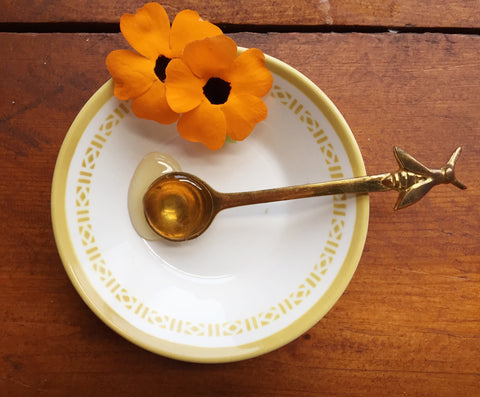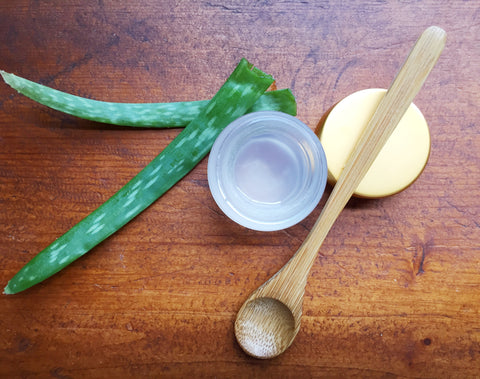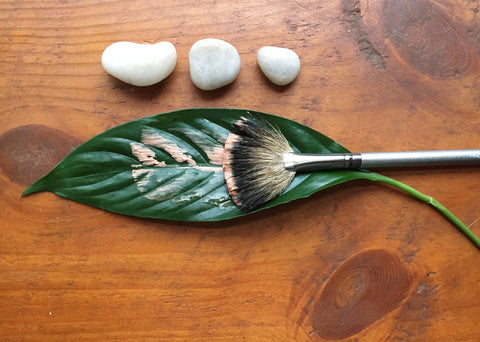As an Ayurvedic facialist, I always apply the principle that treatments must be carefully customized according to the person’s specific skin type and current imbalances. This, by default, makes me an avid believer of the now called ‘’slow beauty’’ movement which involves the active participation in one’s healing process while encouraging consistent practices for long term beauty goals. In this spirit, I find it essential for my clients to leave with skincare tips or recipes that they can easily be made at home and which will greatly enhance and maintain the benefits of the treatment. In a society where we may feel overwhelmed by time constraints and fast-paced living, I think we can all agree that self-care, in which ever form is needed, has become more important than ever.
Today I am sharing a mask recipe that specifically benefits Kapha skin type, described as tending towards oily, thick and often cold skin, large pores as well as regular breakouts of white or blackheads. Proper cleansing and hygiene must be at the heart of the beauty regimen for Kapha skin which is more prone to accumulate ama (toxins). To avoid confusion, I must mention that Pitta skin type also tends towards oiliness (mainly in the T-Zone), however inflammation and sensitivity are the main concerns here and prioritized during treatments and self-care protocol. From an Ayurvedic perspective, keep in mind that skincare treatments should be a natural extension of a broader holistic health routine that includes appropriate lifestyle and dietary habits to effectively correct imbalances, maintain overall wellness and achieve greater results.
If you or anyone you know can benefit from this completely natural purifying mask, read below for a breakdown of its ingredients and how to make it yourself during a well-deserved spa day at home!
INGREDIENT PROFILE:
PINK CLAY:
Among the myriad of clays that you can use as a base for a facial mask, pink clay - a combination of red and white clay - is one of the best choices for oily skin due to its highly absorbing and drying properties. Like all other clays, its main action is to cleanse, mildly detoxify and refresh the skin. What I personally like about the pink variety is that is tends to leave a very subtle rose hue on the facial skin after use, enhancing the complexion and alleviating dullness.
TRIPHALA:
Triphala is an Ayurvedic herbal formulation made with equal parts of three fruits : Amalaki (Emblica Officinalis), Bibhitaki (Terminalia belerica) and Haritaki (Terminalia chebula), that each play a role in cleansing and preserving skin health. In Kapha conditions, it pulls out toxins clogging the skin channels, encourages self-detoxification while preserving essential nutrients as well as boosts the natural immunity of the skin. It is also rich in vitamin C, known to help in the production of collagen and enhance skin clarity.
HONEY:
In ancient Ayurvedic practices, honey is described as having numerous healing qualities. For this particular issue, it can pull out excess oil because of its astringent quality while bringing heat to the often cold and clammy Kapha skin. Honey is also very effective for any type of inflammation or redness (Pitta) such as pimples, acne, wounds and sores. From a Western point of view, it is known for its antiseptic and antimicrobial properties, as well as having an anti-aging effect.
ALOE VERA GEL:
Aloe Vera is an excellent choice for oily skin as it moisturizes without leaving any greasy residue and does not clog the pores. It is also considered an antibacterial and anti-inflammatory agent and contains beneficial antioxidants that include beta carotene, vitamin C and E. This versatile plant is widely used in natural cosmetics to promote skin nourishment and healing by stimulating new cell growth.
ROSE WATER:
In Ayurvedic skincare, as well is in many other ancient practices, rose water is often referred to as the ‘’Mother of beauty remedies’’ as it promotes skin rejuvenation, radiance and healthy complexion for all skin doshic skin types. Among its countless benefits, it is used to nourish and purify the skin, protects it from bacterial infections, promote circulation and maintain skin pH balance.
LEMONGRASS ESSENTIAL OIL:
The therapeutic properties of lemongrass essential oils that benefit Kapha skin are : tonic (invigorates and tones), astringent (firms tissue while reducing discharges and secretions), antimicrobial (destroys or inhibits growth of pathogens), bactericidal (destroys bacteria) and antifungal (destroys or inhibits growth fungi)
PURIFYING MASK RECIPE FOR KAPHA SKIN
Ingredients:
1 Tbs pink clay powder
1/2 tsp Triphala tea* (directions below)
1/2 tsp organic local honey (**If vegan, replace with more aloe vera or rose water)
1/2 tsp aloe gel
1/2 tsp rose water
2 drops lemongrass essential oil
Method:
- Prepare Triphala tea by steeping 1 tsp of Triphala powder in 1 cup of hot water for 10 minutes. Strain and let cool to room temperature.
- Mix all of the mask ingredients together in a small bowl until you obtain a smooth consistency.
- Prep your skin by applying a damp warm towel on your face and wiping off the day’s impurities with gentle strokes.
- With a mask brush or your fingers, apply all over your face, avoiding the more sensitive eye areas.
- Allow the mask to dry and set for 10-15 minutes.
- Rinse with warm water and pat to dry.
Frequency: Once a week








